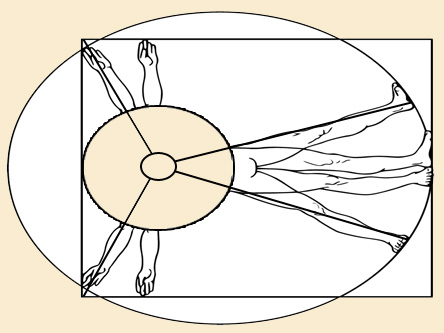Kepler put our feet on the road to modern astronomy, allowing Newton to mathematically prove Kepler’s Laws and then go on to describe the fundamental Laws of Nature. But ask yourself: Why were the planets spaced as they were in order of distance from the Sun? Had God arranged the Universe in accordance with the perfect precepts of geometry? And could we discover a true cosmic harmony designed by the almighty for us, and others to discover?

Ok, so the above questions may have already been correctly answered by our genius mathematican hero, so here is a quick quiz that tests our understanding of Kepler’s law and his sphere packing conjecture.
1 – You discover a new comet around our Sun: Average distance from Sun = 4 AU.
What is the period?
- 1 year
- 4 years
- 8 years
- 64 years
- Don’t have all the necessary information.
2 – You want to launch a satellite into geostationary orbit (i.e., it always stays over the same spot on Earth as the Earth turns), what is the only thing you need to know in order to determine how far from the Earth the satellite needs to orbit?
- The mass of the satellite
- The period of the satellite’s orbit
- The mass of the Earth
- The mass of the Sun
- The average distance to the Sun
3 – Kepler’s second law says “a line joining a planet and the Sun sweeps out equal areas in equal amounts of time.” Which of the following statements means nearly the same thing?
- Planets move fastest when they are moving toward the Sun
- Planets move equal distances throughout their orbit of the Sun
- Planets move slowest when they are moving away from the Sun
- Planets move farther in a given time when they are closer to the Sun
- Planets move the same speed at all points during their orbit of the Sun
4 – Which scientist championed Kepler and described him thus?
- “He (Kepler) lived in a time when the human spirit was fettered and the mind chained”
- “He had a Brave and lonely struggle”
- “He was to take Europe out of the cloister of medieval thought”
- How “Faint echoes of antiquity still reverberated”
- and how “The book of nature had waited 1500 years for a reader”
Finally, In 1611 Kepler was working on a problem in pure geometry – Hilbert’s list:
“No packing of spheres of the same radius in three dimensions has density greater than the face-centered cubic packing.” Sure this looks simple at first sight, but reveals its “subtle horrors to those who try to solve it” (S. Singh). It’s one of those problems that tells us that we are not as smart as we think we are (D. J. Muder).
Why we care? Connections with lattice theory and group theory, applications to number theory, digital communications: error-correcting codes and simply the joy of better understanding the fabric and topology of the cosmos.
Consider a cluster of spheres and the V-cell of the central sphere:
If vol(V) is min, then δ is max.
Local optimality is not global; need correction term f.
5 – For a cluster p, find min(vol(V(p))+f(p)).
6 – Study the associated spherical graph of each cluster. Note, some graphs have automatically high values of f; for the other 5000, use linear optimization.
Kepler Quiz Answers
Lost already? Fear not, all the answers will be revealed in the next post on Johannes Kepler Info which uncovers 8 homemade presentations from students and teachers around the world, describing Kepler’s life and laws.
No Comment
You can post first response comment.